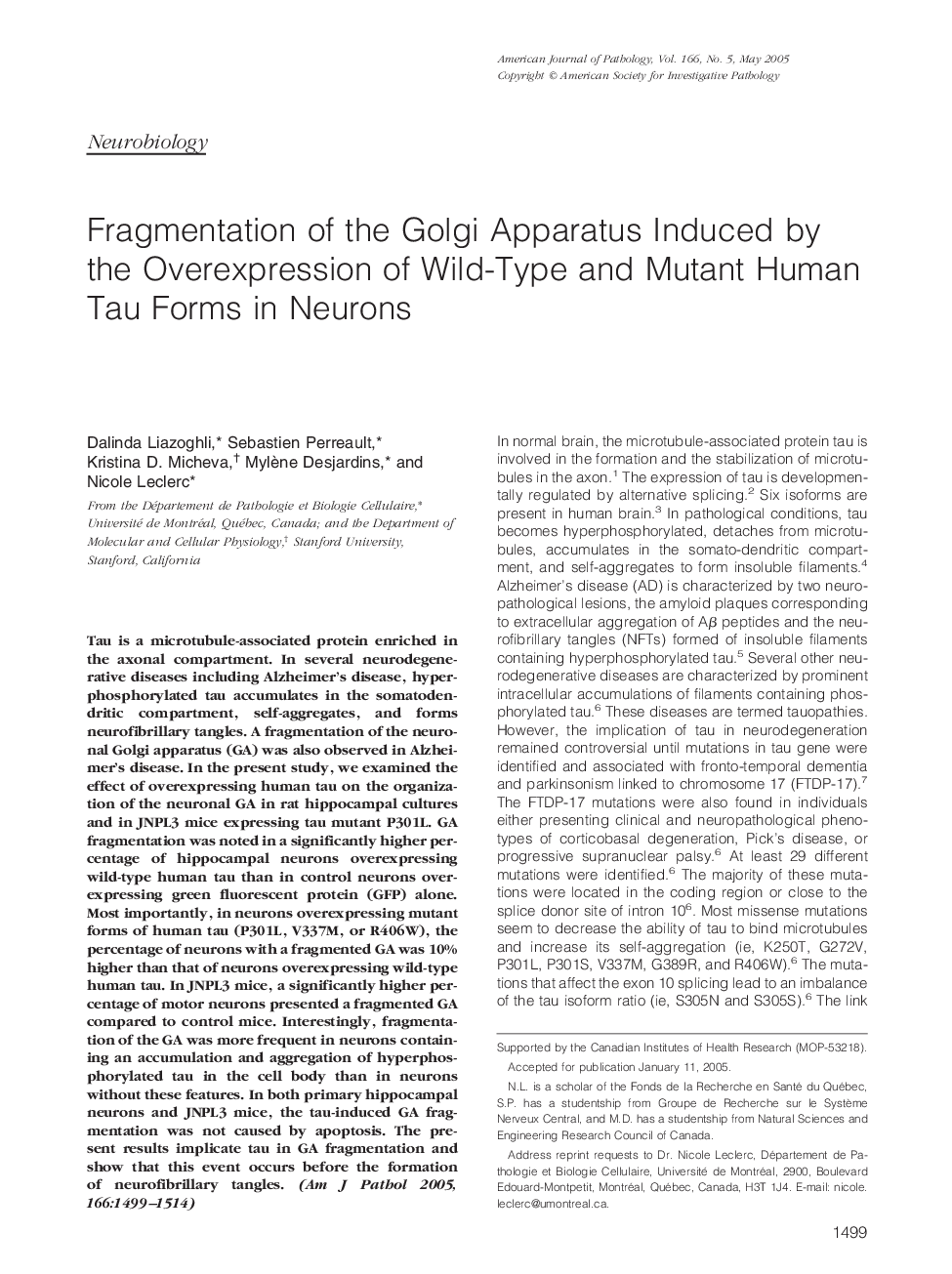| Article ID | Journal | Published Year | Pages | File Type |
|---|---|---|---|---|
| 9943385 | The American Journal of Pathology | 2005 | 16 Pages |
Abstract
Tau is a microtubule-associated protein enriched in the axonal compartment. In several neurodegene-rative diseases including Alzheimer's disease, hyperphosphorylated tau accumulates in the somatodendritic compartment, self-aggregates, and forms neurofibrillary tangles. A fragmentation of the neuronal Golgi apparatus (GA) was also observed in Alzheimer's disease. In the present study, we examined the effect of overexpressing human tau on the organization of the neuronal GA in rat hippocampal cultures and in JNPL3 mice expressing tau mutant P301L. GA fragmentation was noted in a significantly higher percentage of hippocampal neurons overexpressing wild-type human tau than in control neurons over-expressing green fluorescent protein (GFP) alone. Most importantly, in neurons overexpressing mutant forms of human tau (P301L, V337M, or R406W), the percentage of neurons with a fragmented GA was 10% higher than that of neurons overexpressing wild-type human tau. In JNPL3 mice, a significantly higher percentage of motor neurons presented a fragmented GA compared to control mice. Interestingly, fragmentation of the GA was more frequent in neurons containing an accumulation and aggregation of hyperphosphorylated tau in the cell body than in neurons without these features. In both primary hippocampal neurons and JNPL3 mice, the tau-induced GA fragmentation was not caused by apoptosis. The pre-sent results implicate tau in GA fragmentation and show that this event occurs before the formation of neurofibrillary tangles.
Related Topics
Health Sciences
Medicine and Dentistry
Cardiology and Cardiovascular Medicine
Authors
Dalinda Liazoghli, Sebastien Perreault, Kristina D. Micheva, Mylène Desjardins, Nicole Leclerc,
